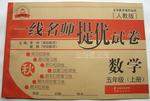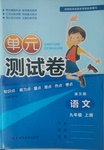题目内容
A research by the National Center for Health Statistics is seen as an important confirmation of the "Hispanic mortality paradox (西班牙裔死亡率悖论) ."
On average, Hispanics outlive whites by 2.5 years and blacks by 7.7 years. Their life expectancy at birth in 2006 was 80.6 years, compared with 78.1 for whites, 72.9 for blacks and 77.7 years for the total population.
The report shows that the Hispanic population has higher life expectancy at birth and at almost every age despite a socioeconomic status lower than that of whites. "Mortality is very correlated with income, education and health care access," says Elizabeth Arias, author of the report. "You would expect the Hispanic population would have higher mortality,," in line with the black population.
The Hispanic paradox has been documented for more than two decades, but this is the first time the government has had enough data to issue national numbers. Researchers are struggling to explain why Hispanics live longer.
"We don't know," says David Hayes-Bautista, director of the Center for the Study of Latino Health and Culture at UCLA's David Geffen School of Medicine. "We thought it was a problem in the data, but we can pretty much say this is real."
Potential factors:
·Culture and lifestyle, Support from extended family and lower rates of smoking and drinking. Latino groups in particular have very strong family and social ties.
·Migration. The "healthy migrant effect" argues that healthy people are more likely to emigrate. And when immigrants become ill, they might return home and die there.
Solving the puzzle may help the nation deal with health care issues because Hispanics use health services less—they make fewer doctors visits and spend less time in hospitals, Hayes-Bautista says. "It's clearly, something in the Latino culture," he says.
1. In 2006, Hispanics' life expectancy is___ years longer than the average of the total population.
A.2.5 B.7.7 C.2.9 D.80.6
2. What does the underlined word "outlive'' in the second paragraph, probably mean?
A.To live longer than B.To live shorter than
C.To die out. D.To expect to live.
3. What is the main idea of paragraph three?
A.Hispanics were born better than whites.
B.Morality is closely related with health care access.
C.Whites should have longer life expectancy.
D.Even experts can't explain the phenomenon.
4. What is Mr. Hayes-Bautista's opinion about the paradox?
A.He supports there is a problem with the data.
B.He intends to trust the cultural factor.
C.He believes in the "healthy migrant effect",
D.lie thinks health care the most important factor.
5. Which of the following inferences is true according to the passage?
A.Black people suffer the lowest social status in America.
B.Hispanics might have healthier ways of life.
C.Only healthy people can immigrate into America.
D.White people don't have strong family ties.
CADBB

 一线名师提优试卷系列答案
一线名师提优试卷系列答案 阳光试卷单元测试卷系列答案
阳光试卷单元测试卷系列答案